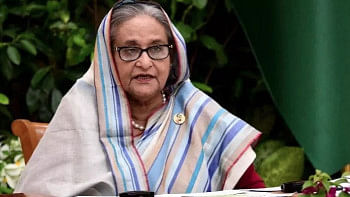Video essays are the new art form: Our top 5 picks

Due to malleability and expansion of the internet, a new form of art form – the video essay – has picked up a lot of traction using audio-visuals to provide deep-seated commentary on a wide range of issues. While the initial focus of video essays has been on films, video essays have been used to analyze a plethora of ideas in the realm of diverse intersections between pop culture and the real world. Here are a few of the top video essays of the year you should look at:
Nothing at Stake
Directed by one of the prime video essayists of our time, Kogonada, this is a beguiling and insightful look into the works of one of the great directors of our time, Alfonso Cuarón. A wonderfully furnished and crafted video essay just under 10 minute with spell binding narration, Kogonada dissects the intensely personal films in Alfonso's career ranging from Children of Men to Gravity to Roma. Exploring the deeply contested ideas of day-to-day existence of his films' characters amidst political turmoil, the video essay highlights the themes of life, death, and rebirth – the prominent themes embedded in each of Alfonso's time. A truly deeply personal watch.
The Bizarre Modern Reality of Sonic the Hedgehog
Super Eyepatch Wolf is known for creating deeply reflective videos, which encompass the fictional and lived experiences of pop-culture characters. Imbued with love, passion and depth, the video as the name suggests, looks at Sonic, the gaming mascot of SEGA and a major trademark of our lives growing up. This video is well edited and well researched and using a set of critical lens of openness and sincerity, he delves into the trappings of the journey of what made Sonic a beloved figure catering to rebellious teens to its subsequent downfall and failures by SEGA, and how Sonic the Hedgehog has kept its voice alive through its fan base - through their amazingly fan-made games to grotesque erotic art. In a battle between the gaming consoles and the fans, the video essay also highlights the importance of the voice of fans when it comes to the resurrection of beloved franchises, particularly, in the example of 2020's hit film, Sonic the Hedgehog.
Why VR is NOT an empathy machine
Video essays have long been used to push forward arguments using a constellation of clips and fragments to demonstrate the urgency of the argument itself. Tackling the claim made by a famous documentary filmmaker on VR being an "empathy machine", this video essay supports the ideal of framing scenes of raw emotions to inoculate an authentic compassion for the characters on screen. As virtual reality makes headways into the art world, the video essay is a well-endowed crated piece of video graphic criticism to analyze the arguments behind VR and counter arguments using audiovisuals, such as an engorging emotional scene of loneliness and helplessness from the film, "Babel". A nuanced form of storytelling, this is a rather educative look at the permeability of the different art forms spurned from advancements in technology.
Why hasn't Animated Horror Succeeded?
Horror has long been a longstanding genre in cinema and animation a medium catering to it. Although, despite animation's ongoing success with other (subcultural) genres, the relationship between the two has never symbiotic. This video essay highlights a labor of artistic storytelling behind one of cinema's long standing questions. Using definitions of horror from film theorists, the video essay is a calm piece with a clear narration and a mosaic of snippets and illustrations throughout history displaying the numerous synthesized attempts in integrating horror with animation. Asking why the horror genre has failed despite promising starts with animation, the video essays provides a introspective look into the history, economics, structures, and censorship that have posed challenges to the horror genre in an animated medium.
Bong Joon Ho's rampaging metaphors
Very few films have a chilling effect on our feelings and senses such as Bong Joon Ho's "Parasite". The master at teasing metaphors, often putting them at the climax of the film's plots, this video essay looks at the metaphors employed by one of world cinema's most enigmatic storytellers. Using mundane concepts of architecture to lively concepts of food and cuisine, each of the metaphors in Bong's films showcases a subtlety of ingrained issues in society ranging from late-stage capitalism to apathy to deeply entrenched social hierarchies.
Illustration: Zarif Faiaz

 For all latest news, follow The Daily Star's Google News channel.
For all latest news, follow The Daily Star's Google News channel. 



Comments